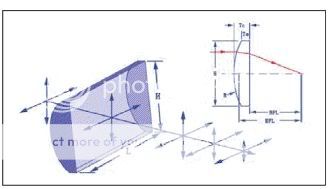Was this uncorrected? I'd be interested to know what the uncorrected beam specs are for both axes in the near and far field.
Would you be happy to post your findings on these lenses? It would be good to know the near and far field beam specs for both axes of each lens (with power readings too if possible).
What was the stacking height difference you've used, and was it with the 3.3FL lenses?
I'd be interested to see how tight 8 diodes could be knife-edged/stacked (depending on diode orientation) and how bad the divergence would be without correction but with some de-focussing of the collimators to square up the beam. Might be OK for large scanners, aerial laser projectors...




 Reply With Quote
Reply With Quote










